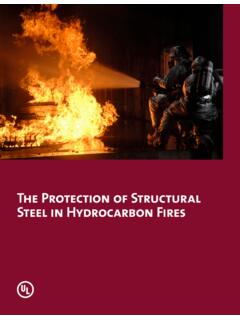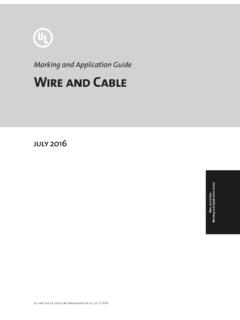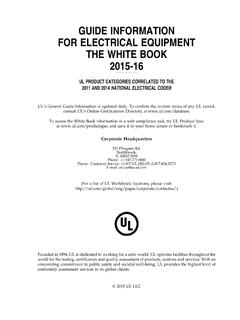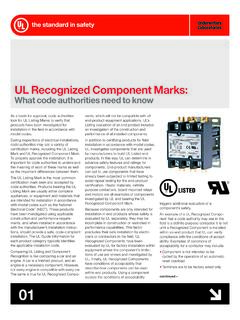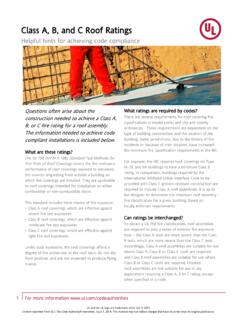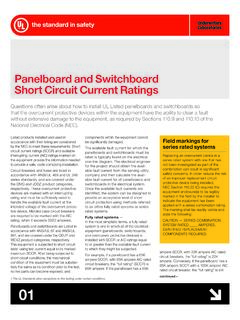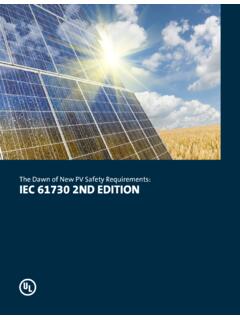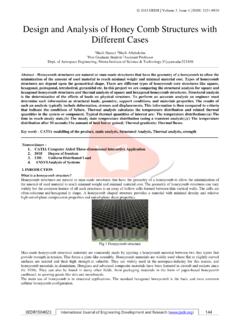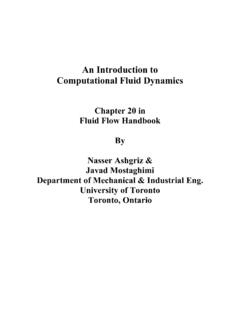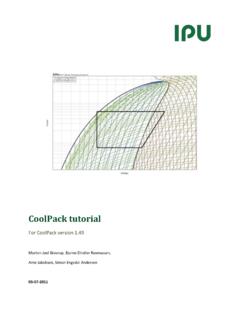Transcription of The Dielectric Voltage Withstand Test - UL
1 The Dielectric Voltage Withstand TestBenefits and limitationsThe Dielectric Voltage Withstand Testpage 2 The Dielectric Voltage Withstand test is an integral part of the product safety evaluation of electrical and electronic devices, and provides manufacturers with important information regarding the quality and appropriateness of the chosen insulation system. The test involves placing an extra-high Voltage across the insulation barrier of the device for one minute. If the insulation holds the Voltage , the device is deemed to have passed the test. However, if the applied Voltage leads to the sudden breakdown of the insulation material and allows current to flow, the insulation is determined to be insufficient since it might pose a shock hazard to the Dielectric Voltage Withstand test is widely used, the real objective of the test is often misunderstood, which may lead to incomplete testing or misleading test results.
2 This white paper seeks to clarify the theory of Dielectric breakdown and the objective of the Dielectric Voltage Withstand test. It explores the applications and limitations of the test in order to better ensure its appropriate use in the product safety approval Mechanism of Insulating MaterialsCurrent flows in a material when an electromotive force is applied that is strong enough to force the movement of electric charge. This charge movement is carried by electrons in the material, and can be measured as electric current. Metals, such as copper, have many free electrons available to transfer electric charge. This makes copper a good conductor because there is little resistance to the flow of charge and the energy lost as heat, due to current is performance of conductive materials is in marked contrast to that of insulating materials, which have a physical structure that prevents the easy movement of electrons.
3 Since the electrons cannot move freely, they cannot effectively carry charge through the material. However, it is always possible to force the material to conduct by exposing it to sufficiently high Dielectric Voltage Withstand TestBenefits and limitationsThe Dielectric Voltage Withstand Testpage 3 The Theory of Dielectric BreakdownThe Dielectric breakdown of an insulating material is a complex physical phenomenon but it may be generally characterized as a sudden change in the resistance of the insulation under test due to the applied Voltage . Simply stated, the test Voltage breaks down the insulating properties of the mechanism of Dielectric breakdown begins with the application of a strong electric field to the insulating material by a high Voltage .
4 Different materials require different levels of electric field in order for Dielectric breakdown to occur. Metals and other conductors have free electrons without the application of any electric field, but insulating materials typically require a very high electric field to allow electrical current to the electric field is sufficient, it energizes the insulator s electrons until they gain enough energy to cross the bandgap and move into the conduction band, dramatically increasing the conductivity of the material. This transformation is called Dielectric breakdown and the electric field necessary to start the breakdown is called the Dielectric strength, or breakdown , Dielectric breakdown is a dramatic and sudden increase in the conductivity of a material due to an applied Current vs.
5 Dielectric CurrentFigure 1 illustrates a simple insulation model which applies to every electrical and electronic resistor accounts for resistive current through the insulation and the capacitor accounts for capacitively coupled currents. For modern insulation material, the insulation resistance is very large, so resistive current is typically several orders of magnitude lower than the capacitively coupled current. The spark gap represents the avalanche (breakdown) phenomenon, where a good insulator turns bad after a certain Voltage is a Voltage is applied to an electrical or electronic device, the natural capacitance of the insulation charges, resulting in the flow of current.
6 If a DC Voltage is applied, the charging occurs only when Voltage is first applied. The DC Voltage charges the capacitance and the capacitive charging current is then reduced to near 60 Hz AC voltages, the charging and discharging of this capacitance occurs 60 times each second, so the capacitive charging current remains at a steady-state level and never goes to zero. This is known as capacitive leakage current. For modern electronic devices, the resistive leakage current is normally very small, so the overall leakage current of such devices is dominated by the capacitive effect. To protect users from injury, many product safety standards set limits for the allowable leakage current.
7 A typical leakage current limit is at 60 Hz and at the rated 1: Basic insulation scheme in electrical productsSpark GapResistorCapacitorThe Dielectric Voltage Withstand Testpage 4 Electrical and electronic devices also exhibit current analogous to leakage current during Dielectric testing. However, since the Dielectric test Voltage is much higher, the current will be higher as well because the capacitive charging current increases in proportion to the increased Voltage . Using the example from above, a device with a leakage current of at 120 Vac would be expected to have approximately Dielectric current during a 1240 Vac Dielectric avoid confusion, this paper uses the term leakage current when describing leakage current when the circuit is at rated Voltage and Dielectric current when describing the analogous current when the circuit is exposed to the Dielectric test Dielectric strength test is not intended to evaluate the amount of leakage current, as these two tests have fundamentally different objectives and compliance criteria.
8 The leakage current limit is only applicable to the leakage current test, and only at the rated of the Dielectric Voltage Withstand TestThe human heart is controlled by the body s nervous system using electrical impulses. Even small currents passing through the heart can interrupt this control, leading to ventricular fibrillation and in the most severe instances, to death. Thus, the most fundamental requirement of electrical safety is to provide sufficient separation between the human body and hazardous currents to avoid interrupting the heart s normal addition to ventricular fibrillation, the human body may also exhibit an involuntary startle reaction and/or muscle contraction in reaction to currents that pass through parts of the body.
9 These reactions can lead to hazards from the uncontrolled body movements than can occur when a person is subjected to the unpleasant nerve and muscle stimulation of electric current. Current passing through the body may also cause muscle contractions that make it impossible to let go of the electrical humans from hazardous currents is typically accomplished by preventing contact with any electrical circuits that carry sufficient Voltage and current to shock the user. To isolate these circuits from human contact, electrical and electronic devices employ electrical insulation, the quality of which must be sufficient for the working Voltage throughout the expected life of the device.
10 The Dielectric Voltage Withstand test is performed in order to verify the capability of the is the most readily available electrical insulator, and through-air spacing requirements (also known as clearance ) are defined in many product safety standards in order to maintain Voltage separation. Spacings across the surface of an insulating material are known as over-surface spacings or creepage and are often defined in applicable standards. However, even in cases where a device complies with the defined through-air and over-surface spacing requirements, the overall insulation system must be tested by the application of the Dielectric Voltage Withstand test to the insulation applied Voltage for the Dielectric Voltage Withstand test is usually much higher than the working Voltage of the device to accommodate transient overvoltages, such as Voltage surges and switching transients.

